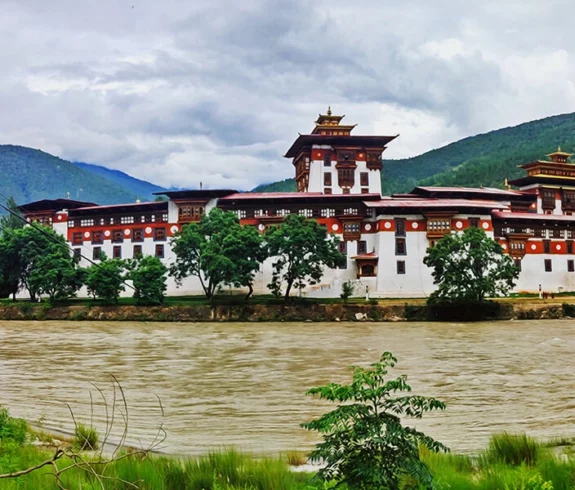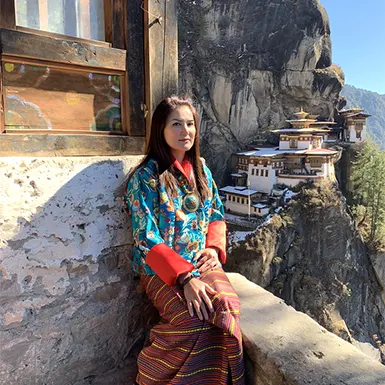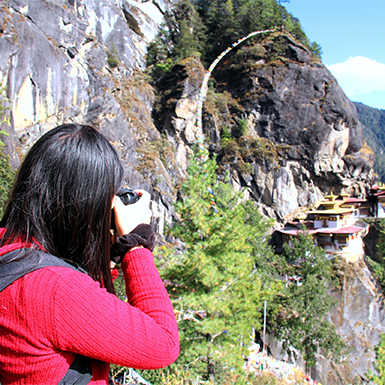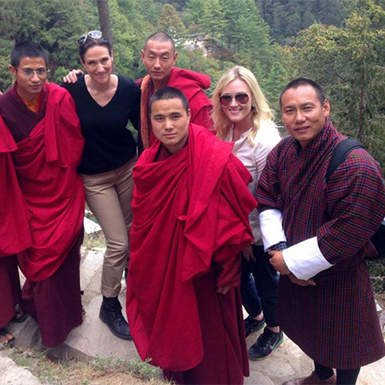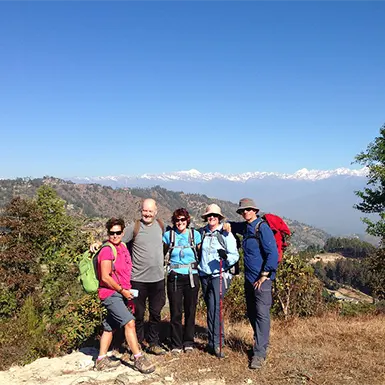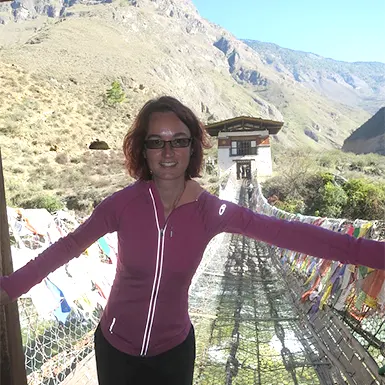Hidden in the beautiful hug of the Himalayas, you’ll find Bhutan. It’s a special place for people who love adventure and want to explore different cultures. Bhutan is called the last big kingdom in the Himalayas, and it’s a place where history, culture, and traditions are significant. When you visit Bhutan, it feels like time moves slowly, and you can experience how people used to live a long time ago. This article provides things to know before the Bhutan Tour.
Unique Aspects of Bhutan
Bhutan cares a lot about the environment and the happiness of its people. They have something called Gross National Happiness (GNH), which measures how well the country is doing based on how happy and healthy the people are, not just how much money they make.
In Bhutan, they don’t judge their success by how many tourists come. Instead, they want each visitor to have a positive impact. They have a unique way of doing tourism called the Minimum Daily Package. This package includes where you stay, what you eat, how you get around, and having a guide. This way, tourism helps the local communities, protects nature, and keeps Bhutan’s culture genuine and authentic.
Understanding Bhutan’s Unique Travel Policies
When you start your Bhutan Tour Packages, you’ll quickly notice that this country does things differently, especially regarding tourism. Bhutan’s rules for travelers are unique and different from what you find elsewhere. These rules are made to invite tourists and protect the environment, culture, and the happiness of those who live there. In this part, we’ll explain these one-of-a-kind rules that make Bhutan stand out as a unique place to visit.
Minimum Daily Package: Sustainable Tourism in Action
Bhutan’s commitment to sustainable tourism is evident when you plan your trip. The country requires all tourists, except nationals from India, Bangladesh, and the Maldives, to pay a Minimum Daily Package. This daily fee covers a range of essentials, including accommodation, meals, transportation, and the services of an official guide.
But why this approach? Bhutan’s goal is clear—to manage tourism in a sustainable way that does not compromise its environment and culture. By regulating the number of tourists and ensuring they have access to quality services, Bhutan safeguards its pristine landscapes and preserves its unique heritage. The Minimum Daily Package is not a hindrance; it’s a strategic choice to offer travelers an authentic experience while respecting the nation’s natural and cultural treasures.
Visa Requirements: A Different Process
Obtaining a visa for Bhutan is a departure from the norm in international travel. Unlike most countries where tourists can independently apply for visas, Bhutan’s visa process is a bit more intricate. To secure a Bhutanese visa, travelers must go through an authorized travel agent who will facilitate the visa application.
The unique aspect here is that the Tourism Council of Bhutan approves the visa only once the total trip cost, including the Minimum Daily Package, is paid. Yes, you read that right—the visa cost is usually included in the daily package. This approach ensures that travelers are committed to their journey and have made the necessary financial arrangements to explore Bhutan responsibly.
‘High Value, Low Impact’ Tourism Policy: Preserving Bhutan’s Treasures
The ‘High Value, Low Impact’ tourism policy is at the core of Bhutan’s travel philosophy. This policy is a testament to Bhutan’s dedication to promoting responsible tourism. Its primary aim is to strike a delicate balance—welcoming tourists while ensuring their numbers do not overwhelm the country’s resources.
The ‘High Value’ aspect emphasizes providing a high-quality experience for visitors. By maintaining a limited number of tourists, Bhutan ensures travelers have a more intimate and enriching experience. This approach fosters a deeper connection with Bhutan’s natural environment and cultural heritage.
The ‘Low Impact’ aspect is equally vital. Bhutan’s commitment to preserving its pristine landscapes and unique traditions means that tourism should not degrade the environment or dilute its cultural authenticity. This policy safeguards Bhutan’s natural treasures and ensures that future generations can revel in its splendor.
In essence, Bhutan’s travel policies are a testament to its unwavering commitment to sustainability, culture, and the well-being of its people. By adhering to these policies, travelers gain access to a land of incredible beauty and become partners in preserving its wonders for generations to come. It’s a unique journey guided by principles that make Bhutan Tour a true gem among travel destinations.
Best Time to Visit Bhutan: Seasons, Festivals, and Cultural Riches
Bhutan, a land of enchantment and natural splendor, boasts a climate as diverse as its landscapes. From subtropical valleys in the south to the alpine heights of the north, Bhutan’s weather varies significantly due to its elevation changes. Understanding this climatic diversity is critical to planning your perfect journey to the last Himalayan kingdom.
Bhutan’s Climate and Seasons
Bhutan’s climatic variations are a testament to its topographical diversity. Lush and subtropical valleys reign supreme in the southern region, offering a delightful contrast to the temperate and alpine climates in the central and northern areas.
Southern Bhutan: Here, you’ll encounter a subtropical climate with warm temperatures, especially during summer. Rainfall is abundant, resulting in lush forests and vibrant flora.
Central Bhutan: Moving towards the central region, you’ll experience a temperate climate with milder temperatures. This zone blends rolling hills, historic towns, and cultural wonders.
Northern Bhutan: As you ascend into the northern reaches, the landscape transforms into an alpine paradise. Expect cooler temperatures, especially in winter, as you explore pristine valleys and rugged mountain terrain.
Recommended Times to Visit
The question that naturally arises is, “When is the best time to visit Bhutan?” The answer depends on your preferences and interests, but two seasons stand out as ideal for most travelers:
Spring (March to May): Springtime in Bhutan is a symphony of colors and pleasant weather. The valleys come alive with blooming rhododendrons, and the clear skies provide stunning views of the Himalayan peaks. This season is perfect for trekking, wildlife spotting, and immersing yourself in Bhutan’s natural beauty.
Autumn (September to November): Autumn ushers in cool, dry weather, making it another excellent time to explore Bhutan. The skies remain clear, offering breathtaking vistas of the mountains. Autumn is also festival season, with two of the most famous Tshechus, Paro Tshechu, and Thimphu Tshechu, taking place during this period. These vibrant festivals are a window into Bhutanese culture, featuring traditional mask dances, religious rituals, and gatherings in majestic Dzongs (fortresses).
Festivals and Cultural Events
Bhutan has unique festivals called ‘Tshechus,’ which are essential in their culture. These events are not just about having a good time; they are meaningful expressions of their spirituality, traditions, and sense of community. When you go to a Tshechu, you learn a lot about Bhutanese culture and be a part of something special.
Mask Dances: Tshechus are famous for their fantastic mask dances. These dances show old stories and religious tales. The dancers wear colorful costumes and do interesting, exciting movements. They take the audience into a world of old stories and legends.
Religious Rituals: Each Tshechu involves religious rituals performed by monks and laypeople. These rituals are an integral part of Bhutanese Buddhism, and witnessing them is a spiritual experience that transcends cultural boundaries.
Dzong Gatherings: Tshechus often occur in Dzongs, which are majestic fortresses and monastic complexes. These gatherings are a unique fusion of spirituality and festivity, where the secular and sacred unite harmoniously.
Timing your visit to coincide with a Tshechu allows you to witness Bhutanese culture in all its glory. It’s a chance to be a traveler and participate in the rich tapestry of Bhutanese traditions.
Bhutan’s climate and cultural calendar offer many choices for travelers. Whether you seek the vibrant colors of spring, the crisp air of autumn, or the spiritual richness of a Tshechu, Bhutan is a destination that promises a journey like no other—a journey into the heart of the Himalayas and the soul of a nation.
Cultural Etiquette and Practices in Bhutan: A Respectful Journey
As you start your adventure in the beautiful world of Bhutan, it’s essential to welcome the culture of this Himalayan country with respect and an open heart. Bhutan’s culture is strongly connected to Mahayana Buddhism, and this spiritual belief affects how people live and what they do every day. To make sure you have a peaceful and meaningful experience, here are some essential things to know about how to behave and what to do:
1. Bhutanese Culture: The Heart of the Kingdom
Bhutan’s culture is the nation’s beating heart, and understanding and respecting it is paramount. At its core lies Mahayana Buddhism, which permeates every facet of life, from rituals to festivals. The Bhutanese people hold their culture dear, and visitors are encouraged to do the same. By immersing yourself in Bhutanese culture, you can forge a deeper connection with the land and its people.
2. Interaction with Locals: Greetings and Respect
Interactions with locals in Bhutan are often warm and welcoming, but it’s crucial to approach them with respect and cultural sensitivity. Here are some tips for respectful interactions:
Greetings: Begin with a warm greeting. The traditional Bhutanese greetings are ‘Kuzuzangpo’ (pronounced koo-zoo-zang-po) and ‘Namaste.’ These simple gestures of goodwill go a long way in establishing a positive connection.
Public Displays of Affection: Bhutanese society values modesty, and public displays of affection, such as hugging and kissing, are not customary. It’s best to refrain from such expressions in public spaces.
3. Dress Code: Embracing Modesty and Tradition
Bhutan holds its cultural heritage in high regard, and the dress code reflects this reverence, especially when visiting religious sites and government buildings. Here’s what you need to know:
Modesty and Tradition: Both men and women are expected to dress modestly and adhere to traditional attire. For men, this means wearing a ‘gho,’ a knee-length robe tied at the waist. Women wear a ‘kira,’ a long, ankle-length dress. These traditional garments are not only a symbol of respect for culture but also a way of embracing Bhutanese identity.
4. Behavior in Religious and Cultural Sites: Reverence and Respect
Bhutan is dotted with monasteries, temples, and sacred sites, and visiting these places offers profound spiritual experiences. To ensure a harmonious visit, observe these guidelines:
Removing Shoes: Removing your shoes when entering religious and cultural sites is customary. This practice is a sign of respect and purity. Be prepared to do so, and consider wearing footwear that is easy to take off.
Photography: While Bhutan’s landscapes and temples are incredibly photogenic, it’s essential to respect the sanctity of these places. Photography inside sacred areas is generally not allowed. Always ask for permission before taking photos, and respect any restrictions.
Quiet and Respectful Demeanor: In religious spaces, maintain a quiet and respectful demeanor. Avoid loud conversations or disruptive behavior. Many Bhutanese come to these places for meditation and reflection, so your consideration is appreciated.
By embracing these cultural etiquettes and practices, you’ll respect Bhutan’s heritage and enhance your journey by forging meaningful connections with the people and the spirituality that defines this extraordinary kingdom. Bhutan welcomes you with open arms and a rich tapestry of traditions waiting to be discovered.
Must-Visit Places and Experiences in Bhutan: Unveiling the Mystical Land
Bhutan, a kingdom in the Himalayas, offers a treasure trove of must-visit places and experiences that promise to enchant and inspire. Here, we unveil the key attractions, historical gems, and thrilling outdoor adventures that define this mystical land.
Key Attractions
Thimphu – The Capital City: Your Bhutanese journey often begins in Thimphu, the capital city. Explore its vibrant markets, visit the grand Tashichho Dzong, and marvel at the giant Buddha Dordenma statue overlooking the valley.
Paro Taktsang (Tiger’s Nest Monastery): This iconic monastery clings to the cliffs of Paro Valley like a mythical fortress. The hike to Tiger’s Nest is a pilgrimage, offering breathtaking views and a profound spiritual experience.
Punakha Dzong: Known as the ‘Palace of Great Happiness,’ Punakha Dzong is a stunning architectural masterpiece. It stands at the confluence of two rivers and symbolizes Bhutanese tradition and history.
Scenic Valleys – Haa and Bumthang: Bhutan is blessed with valleys of unparalleled beauty. Haa Valley, with its pristine landscape and Bumthang, often referred to as the ‘Switzerland of Bhutan,’ is worth exploring.
Historical Sites
Paro Dzong: This fortress monastery in Paro is a striking architectural wonder and a repository of Bhutan’s history. It houses religious relics and offers a glimpse into the country’s past.
National Museum (Ta-Dzong) – Paro: The National Museum in Paro is a treasure trove of Bhutanese heritage. It showcases a rich collection of art, artifacts, and cultural exhibits that tell the story of Bhutan’s unique culture and history.
Adventure and Nature Activities
Trekking in the Himalayas: Bhutan is a trekker’s paradise with trails for all experience levels. The Snowman Trek and the Druk Path Trek are popular choices, offering awe-inspiring vistas of the Himalayas.
Bird Watching in Phobjikha Valley: Phobjikha Valley is a designated conservation area and a bird lover’s dream. It’s the winter home of the endangered black-necked cranes, making it a must-visit for nature enthusiasts.
Pristine Nature Exploration: Bhutan’s unspoiled natural beauty is a constant companion on your journey. From serene lakes like Gangtey Tsho to lush forests and dramatic mountain landscapes, every step is a revelation.
Bhutan’s allure lies not only in its breathtaking landscapes but also in its profound culture and spirituality. These must-visit places and experiences are windows into the soul of this mystical land, inviting you to explore its wonders and create lasting memories.
Exploring Bhutanese Cuisine: A Spicy and Flavorful Journey
Bhutanese cuisine is a delightful reflection of the country’s culture and heritage. Known for its distinctive flavors and unique ingredients, Bhutanese food is essential to your journey through this mystical kingdom.
A love for spice, particularly chili peppers, is at the heart of Bhutanese cuisine. Bhutanese people have an impressive affinity for heat, and chili is used generously in their dishes. One of the most famous Bhutanese dishes is Ema Datshi, a fiery chili and cheese stew staple in every Bhutanese household. Combining spicy chilies and creamy cheese creates a unique flavor explosion.
Momo, a type of dumpling, is another beloved Bhutanese dish. These small pockets of joy can be filled with various ingredients, including vegetables, meat, or cheese. They are often served with a flavorful dipping sauce.
Local Dining
To savor authentic Bhutanese cuisine, consider dining at local restaurants and eateries. Here are some popular dishes to try:
Ema Datshi: As mentioned earlier, this dish is a must-try. Its spiciness can vary, so you can request the level of heat that suits your taste.
Phaksha Paa: This is a hearty pork dish with spicy red chilies and radishes. It’s a comforting, flavorful option for meat lovers.
Jasha Maroo: If you prefer chicken, Jasha Maroo is a delectable chicken stew with a tomato-based sauce and aromatic spices.
Suja: To accompany your meal, try Bhutanese butter tea called Suja. It’s a warm and creamy beverage made with butter and salt. It might be an acquired taste for some, but it’s integral to Bhutanese culture.
Red Rice: Bhutanese meals are often served with red rice with a nutty flavor and a distinctive red husk.
Doma: To finish your meal, try Doma, a betel leaf wrapped around areca nut and lime. It’s a traditional and cultural practice, but be aware that it can have stimulating effects.
When dining in Bhutan, it’s important to consider dietary considerations. Vegetarian options are widely available, and you can request milder versions of spicy dishes if you’re not accustomed to intense heat.
Traditional Dining Etiquette
As you enjoy Bhutanese cuisine, keep in mind the traditional dining etiquette:
Eating with Hands: Eating with your hands is customary, so feel free to embrace this unique way of dining. Wash your hands before and after the meal.
Wasting Food: Bhutanese culture places great importance on not wasting food. Leaving food on your plate is disrespectful, so take only what you can finish.
Offering and Receiving: Accepting food or drink is polite, even if you intend to consume only some. It’s a sign of appreciation.
Exploring Bhutanese cuisine is not just about satisfying your taste buds; it’s an opportunity to delve into the heart of Bhutanese culture. So, embrace the spice, savor the flavors, and enjoy the culinary journey that awaits you in this enchanting kingdom.
Choosing the Perfect Accommodation in Bhutan: Where Comfort Meets Culture
Selecting suitable accommodation during the Bhutan Tour is crucial to planning your journey to the Land of the Thunder Dragon. Bhutan offers diverse options to suit various preferences and budgets, ensuring a comfortable and memorable stay.
Types of Accommodation
Luxury Resorts: Bhutan boasts some of the world’s most exquisite luxury resorts nestled amid pristine natural landscapes. These resorts offer abundant amenities, stunning views, and spa facilities for those seeking a lavish experience.
Mid-Range Hotels: Mid-range hotels in Bhutan provide a comfortable stay with modern amenities. They are perfect for travelers looking for a balance between affordability and comfort.
Guesthouses: Guesthouses are a popular choice among budget-conscious travelers. They offer clean and cozy rooms, often with a touch of Bhutanese hospitality. Staying in a guesthouse allows one to interact with locals and gain cultural insights.
Traditional Bhutanese Homestays: For a truly immersive cultural experience, consider staying in a traditional homestay. You’ll live with a local family, participate in daily life, and better understand Bhutanese customs.
Choosing the Right Accommodation
When selecting accommodation in Bhutan, consider the following factors:
Budget: Determine your budget range and choose accommodation accordingly. Bhutan offers options for all budgets, so you can find a comfortable place that suits your financial plan.
Location: Think about your itinerary and preferred location. Whether you want to stay in the heart of Thimphu, the tranquility of a valley, or the serenity of a remote village, Bhutan has options to match.
Cultural Experience: To immerse yourself in Bhutanese culture, consider traditional accommodations. Staying in a Bhutanese homestay or a guesthouse with Bhutanese architecture can provide a unique cultural perspective.
Amenities: If specific amenities are essential to you, such as spa facilities, Wi-Fi, or on-site dining, check the hotel’s offerings in advance.
You’ll get three-star hotel accommodation when you book your trip to Bhutan with Peregrine Treks and Tours. If you’d like to stay in a fancier 4-star hotel, you can do that, but it will cost extra. We won’t arrange accommodations in hotels that don’t have star ratings for our guests.
During the trekking part of your journey, we will provide tented accommodation to ensure you have a comfortable place to stay.
Booking in Advance
Especially during peak tourist seasons, booking your accommodation well in advance is advisable. Bhutan’s popularity as a travel destination means that rooms can fill up quickly, and securing your stay early ensures availability at your preferred choice.
Remember that in Bhutan, it’s not just a place to sleep; it’s an integral part of your overall experience. Whether you opt for luxury, mid-range, or budget accommodation, you’ll find warm Bhutanese hospitality and a welcoming atmosphere in each option. Choose the accommodation that resonates with your travel style, and prepare for an unforgettable journey in the Kingdom of Bhutan.
Getting Around Bhutan: A Journey Through Scenic Terrain
Navigating the enchanting landscapes of Bhutan requires careful consideration of the transportation options available in this Himalayan kingdom. While Bhutan’s road network offers breathtaking views, it’s essential to understand the choices and challenges of getting around.
Options for Getting Around
Private Vehicles: Most travelers in Bhutan rely on private vehicles provided by tour operators. These comfortable and well-maintained cars or vans come with experienced local drivers familiar with the terrain. This option offers flexibility and convenience for exploring Bhutan at your own pace.
Public Buses: Bhutan has a public bus network connecting significant towns and cities. While this is a more budget-friendly option, it may be less convenient for travelers with specific itineraries, as schedules can be irregular.
Domestic Flights: Bhutan has several domestic airports, including Paro and Bumthang. Domestic flights are a quick way to cover longer distances, but they are subject to weather conditions, and flight availability may be limited.
Navigating Rural and Urban Areas
Urban Areas (Thimphu, Paro, etc.): Bhutan’s urban areas, like Thimphu and Paro, have well-maintained roads, making it relatively easy to get around. Taxis are also available for short trips within cities.
Rural Areas: Venturing into rural Bhutan can be a rewarding experience, but the roads in these areas may be rougher due to the mountainous terrain. Be prepared for longer travel times, and consider hiring experienced local drivers who can navigate the challenging roads.
Road Conditions: While Bhutan’s roads offer stunning views of the Himalayas, they can be narrow and winding, requiring careful driving. Some routes, like the journey to the iconic Tiger’s Nest Monastery (Paro Taktsang), involve steep ascents.
Altitude Considerations: Bhutan’s varying altitudes can affect travel plans. It’s essential to acclimatize gradually to higher altitudes to avoid altitude sickness. Travelers should plan their itineraries accordingly.
Respect for Nature: Bhutan places a strong emphasis on environmental conservation. Travelers should follow responsible tourism practices, such as disposing of waste properly and respecting wildlife.
Local Drivers: When hiring local drivers, ensure they are experienced and familiar with the routes you plan to take. Their knowledge of road conditions and weather patterns can be invaluable.
As you begin your journey through the stunning landscapes of Bhutan, get ready for an adventure full of beautiful scenery and rich culture. You can choose how to get around using private vehicles, public buses, or domestic flights. Each way of traveling has its unique charm and allows you to experience Bhutan’s unique natural beauty and rich culture.
Packing Essentials for Your Bhutan Adventure
Preparing for your Bhutan Trek requires careful consideration of the unique climate and terrain you’ll encounter. Here’s a list of packing essentials to ensure a comfortable and enjoyable journey:
Weather-Appropriate Clothing:
Layers: Bhutan’s weather varies depending on the region and season. Packing layers is essential for adjusting to different temperatures throughout the day. Include long-sleeved shirts, T-shirts, and thermal wear for added warmth.
Waterproof Jacket: Bhutan experiences occasional rain, especially during the monsoon season. A waterproof jacket or raincoat will keep you dry during outdoor activities.
Comfortable Hiking Shoes: If you plan to explore Bhutan’s stunning landscapes and trek in the Himalayas, comfortable and sturdy hiking shoes with good traction are necessary.
Warm Clothing: Nights in Bhutan, even during the warmer months, can be chilly, especially at higher altitudes. Pack warm clothing like a fleece jacket, gloves, and a beanie.
Trekking Gear (if trekking):
Backpack: Invest in a good-quality backpack with ample storage space to carry your essentials during treks.
Trekking Poles: Trekking poles provide stability and reduce strain on your knees, especially during uphill and downhill treks.
Appropriate Footwear: High-quality trekking boots with ankle support are crucial for comfort and safety on rugged trails.
Altitude Sickness Remedies:
Diamox: Altitude sickness can be a concern in Bhutan due to its high elevations. Consider carrying altitude sickness remedies like Diamox, but consult a healthcare professional before use.
Acclimatization: To prevent altitude sickness, allow time for acclimatization. Take it easy during your first few days in Bhutan, and stay hydrated.
Additional Tips:
Sun Protection: Bhutan’s high-altitude locations can lead to intense sun exposure: pack sunscreen, sunglasses, and a wide-brimmed hat for protection.
Water Bottle: Staying hydrated is essential, so carry a refillable water bottle and drink plenty of fluids, especially in the mountainous regions.
Travel Adapter: Bhutan uses Type D and Type F electrical outlets, so a travel adapter may be necessary to charge your devices.
First Aid Kit: Carry a basic kit with essentials like adhesive bandages, pain relievers, and any personal medications you may need.
Travel Documents: Remember your passport, visa, and any necessary permits for Bhutan. Please keep them in a secure, waterproof pouch.
By packing these essentials, you’ll be well-prepared to explore Bhutan’s stunning landscapes, embrace its unique culture, and embark on an unforgettable journey through the Himalayan kingdom.
Responsible and Safe Travel in Bhutan: Embrace Sustainability and Well-being
As you start your adventure in Bhutan, thinking about sustainable tourism, safety, and health is essential. Here are some helpful tips to make sure you have a great experience while also being kind to the environment and looking after yourself:
Sustainable Tourism Practices:
Respecting Nature: Bhutan’s pristine landscapes are a treasure. Please treat them carefully by not littering, sticking to designated paths during treks, and refraining from disturbing wildlife. Leave no trace of your presence so others can enjoy the beauty of Bhutan’s nature.
Supporting Local Communities: One of the pillars of sustainable travel is supporting local communities. When purchasing souvenirs and handicrafts, buy directly from local artisans. This helps local livelihoods and promotes the preservation of traditional crafts.
Reducing Plastic Usage: Bhutan is committed to environmental conservation, and you can contribute by minimizing plastic waste. Carry a reusable water bottle and avoid single-use plastics during your journey. Recycling options may be limited in some areas, so responsible disposal is crucial.
Safety and Health Considerations:
Vaccinations: Before traveling to Bhutan, it’s advisable to check with your healthcare provider for recommended vaccinations. Certain vaccines may be necessary depending on your travel plans and health history. Stay informed about any health advisories related to Bhutan.
Altitude Sickness: Bhutan’s high-altitude regions can pose a risk of altitude sickness, especially if you ascend too quickly. Allow time for acclimatization, stay hydrated, and recognize symptoms like headaches, dizziness, and shortness of breath. If symptoms persist or worsen, seek medical assistance promptly.
Safety Precautions: While Bhutan is generally a safe country for travelers, it’s essential to take common-sense safety precautions. Secure your belongings, be aware of your surroundings, and avoid risky behavior. Stay hydrated, especially at higher altitudes.
You can make the most of your Bhutanese journey by embracing sustainable tourism practices and prioritizing your safety and health. Bhutan’s pristine natural beauty and vibrant culture await you, and your responsible and mindful approach will contribute to preserving this unique destination for generations to come. Enjoy your adventure in the Land of the Thunder Dragon!
Discover the Magic of Bhutan: A journey unlike any others
In the heart of the Himalayas lies a kingdom that stands as a testament to the harmonious coexistence of tradition and modernity. Bhutan, the Land of the Thunder Dragon, beckons travelers with its unique charm and unspoiled beauty. Here’s a recap of the key points that make Bhutan a one-of-a-kind travel destination:
Cultural Identity: Bhutan proudly maintains its cultural identity while embracing elements of the modern world. Its commitment to preserving tradition is evident in its architecture, attire, and way of life.
Sustainable Tourism: Bhutan’s approach to tourism is distinct. The Minimum Daily Package ensures responsible tourism, protecting the environment and culture while providing travelers with an authentic experience.
Natural Beauty: From lush valleys to towering peaks, Bhutan’s landscapes are a canvas of breathtaking beauty. The country’s commitment to environmental conservation ensures that its natural wonders remain pristine.
Festivals and Culture: Bhutan’s vibrant festivals, or ‘Tshechus,’ are windows into its rich culture. These celebrations are a symphony of colors, mask dances, and religious rituals that offer a deeper understanding of Bhutanese spirituality.
Responsible Travel: Bhutan encourages travelers to respect nature, support local communities, and reduce plastic waste. By adopting sustainable practices, visitors become partners in preserving Bhutan’s beauty.
Explore Bhutan with an Open Heart and Respectful Attitude
As you prepare to explore Bhutan, approach this journey with an open heart and a deep respect for its culture and environment. Be mindful of the traditions and customs, converse with locals, and savor the flavors of Bhutanese cuisine.
Personal Reflection: A Glimpse into Bhutan’s Soul
During my journey through Bhutan, I was struck by the warmth and authenticity of its people. Whether I was hiking to the iconic Tiger’s Nest Monastery or participating in a traditional festival, Bhutan welcomed me with open arms.
Bhutan is not just a destination; it’s an invitation to connect with a land steeped in spirituality, culture, and natural beauty. It’s a place where the past and the present harmonize, and preserving tradition is a way of life.
So, embrace the magic of Bhutan, immerse yourself in its wonders, and leave with memories that will stay with you forever. Your journey to the Land of the Thunder Dragon is an unforgettable chapter in your travel story.
